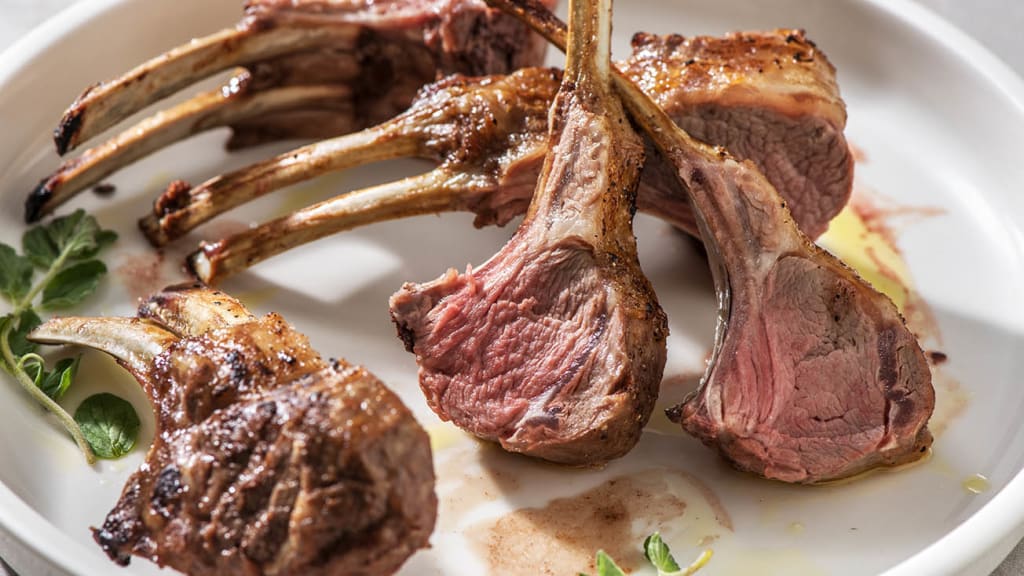Lamb
Lamb
Lamb is a succulent and nutrient-dense meat enjoyed across the world for its tender and juicy texture, and its unique flavour.
LAMB NUTRITIONAL INFORMATION & HEALTH BENEFITS

HOW TO STORE LAMB
Lamb must be suitably cold-stored so it doesn't go off. This can be achieved by placing it in the refrigerator or freezer. If you intend to use it within a few days, keep it in the fridge at around 1-4ºC. If you plan on storing it for longer, freeze the meat when raw and always use by the “use by” date. Refrigerated meat will keep for about 3-4 days, but when properly frozen (below -18°C), you can expect it to be good to use for up to nine months.
Store the meat in your refrigerator in its original packaging on a plate to prevent any leaking juices contaminating other foods. Cooked lamb can also be stored in the fridge or freezer. Generally, it should be consumed within three days of cooking, but frozen cooked lamb will keep for around 3 months.

LAMB TIPS, TRICKS & HACKS
Here are some handy tips on how to cook lamb, as well as a few delicious and unusual ideas for foods to serve it with.
When roasting lamb, do so at a high temperature as this will maximize the brown crust on the top. However, don't use this method for larger cuts or joints as the surface will become dry and possibly char before the meat has cooked through.
Another useful technique is to start off roasting at a high heat and then reduce the temperature after about 15 minutes to allow the centre to cook. You can also rub olive oil onto lean cuts before cooking to prevent them from drying out and use the juices from the meat as a baste.

If you want to grill or even boil the meat, choose tender, fairly lean portions that aren't too thick, such as tenderloin, chops, kebabs, or burgers made from the minced meat. Don't forget to turn the meat part-way through the cooking process, but make sure you use tongs, so you don't puncture the surface.
Another great idea if you're wondering how to prepare lamb is to sauté it. Choose tender cuts that aren't over one inch (3cm) thick and make sure the surface is dry by patting it with kitchen roll so the meat browns rather than steams in the pan. Finally, avoid over-crowding the pan and sauté in batches if necessary.
Here are some interesting ideas for the foods that go well with lamb:
- Glazed carrots with Dijon mustard
- Jersey Royal potatoes with butter and herbs
- Roasted leeks and garlic
- Courgette and lemon
- Roasted garlic and parsley with butternut squash
LAMB FACTS
- The average weight of the animal that's taken to market is 60kg
- A typical roast rack comprises eight ribs
- In the food industry, lamb is an internationally traded ingredient and many countries rely on the meat being imported so it's available all year round
https://www.nutritionadvance.com/lamb-meat-nutrition-benefits/
https://www.theguardian.com/business/2016/mar/20/uk-supermarkets-urged-to-stock-more-british-lamb

Delicious recipes for you to choose next week
Like what you see? Check out all of our upcoming recipes
VIEW OUR MENU